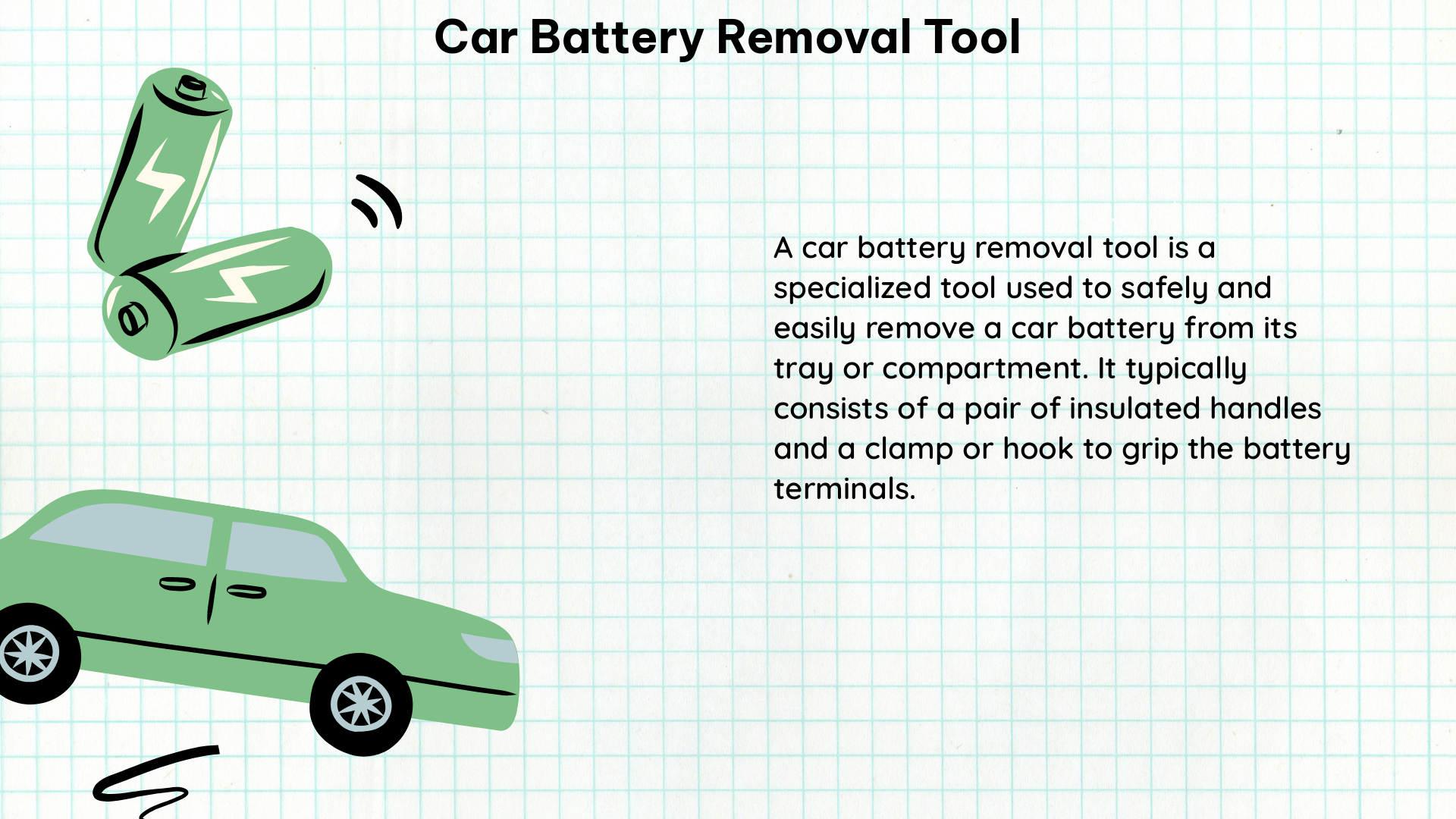When it comes to removing a car battery, having the right tools and understanding the technical specifications can make the process more efficient, safe, and hassle-free. This comprehensive guide delves into the measurable and quantifiable data points, as well as the advanced hands-on details and technical specifications, to ensure you have a seamless car battery removal experience.
Measurable and Quantifiable Data
-
Voltage Range: Car battery removal tools should be capable of handling a wide voltage range, typically from 6V to 24V, to ensure compatibility with different battery types, including lead-acid, lithium-ion, and AGM batteries.
-
Current Capacity: The current capacity of a car battery removal tool is a crucial specification, as it indicates the maximum amount of current the tool can handle without overheating or getting damaged. A tool with a current capacity of 100A or higher can safely handle batteries with higher capacities.
-
Cable Length: The length of the cables attached to the car battery removal tool can vary from 12 inches to 72 inches, providing flexibility and reach to access hard-to-reach areas in the engine bay.
-
Weight: The weight of the tool can range from 1 pound to 5 pounds, with lighter tools being easier to handle and maneuver, while heavier tools may provide more stability and durability.
-
Warranty: Car battery removal tools often come with a warranty, ranging from 1 year to a lifetime, depending on the manufacturer and model, offering protection against defects or malfunctions.
-
Price: The price of a car battery removal tool can vary from $20 to $200, depending on the features, specifications, and brand.
Advanced Hands-On Details and Technical Specifications

-
Safety First: Always wear protective gear, such as insulated gloves and safety glasses, to protect yourself from electrical shocks, sparks, and other hazards.
-
Check Voltage Compatibility: Before using a car battery removal tool, ensure that the tool’s voltage range matches the voltage of your car’s battery. Using a tool with the wrong voltage can damage the tool or the battery.
-
Disconnect Negative Terminal First: When removing the battery, always disconnect the negative (black) terminal first to prevent electrical shorts and other safety issues.
-
Use Appropriate Cables: Select cables with the appropriate gauge (typically 4 AWG to 2 AWG) and length to ensure efficient and safe battery removal. Thicker cables can handle higher currents, while longer cables provide more flexibility and reach.
-
Secure the Tool: Securely attach the car battery removal tool to the battery terminals to prevent it from slipping or moving during the removal process, which could lead to damage or injury.
-
Follow Manufacturer Instructions: Carefully read and follow the manufacturer’s instructions for using the car battery removal tool. This can help prevent damage to the tool or the battery and ensure a safe and efficient removal process.
-
Memory Saver: Consider using a memory saver device to maintain the settings of your car’s electronics, such as the radio presets and clock, during the battery removal and replacement process.
-
Proper Disposal: Dispose of the old battery properly, as car batteries contain hazardous materials that should not be discarded with regular household waste.
By understanding and applying these measurable and quantifiable data points, as well as the advanced hands-on details and technical specifications, you can ensure a safe, efficient, and successful car battery removal experience.
References
- Types & Examples of Quantitative Data – Fullstory
- Applying Statistical and Reliability Techniques for Determining …
- Lithium-ion battery data and where to find it – ScienceDirect.com
- Using a Memory Saver When Disconnecting Your Car Battery
- How To Change Your Car Battery Without Losing Radio … – YouTube

The lambdageeks.com Core SME Team is a group of experienced subject matter experts from diverse scientific and technical fields including Physics, Chemistry, Technology,Electronics & Electrical Engineering, Automotive, Mechanical Engineering. Our team collaborates to create high-quality, well-researched articles on a wide range of science and technology topics for the lambdageeks.com website.
All Our Senior SME are having more than 7 Years of experience in the respective fields . They are either Working Industry Professionals or assocaited With different Universities. Refer Our Authors Page to get to know About our Core SMEs.